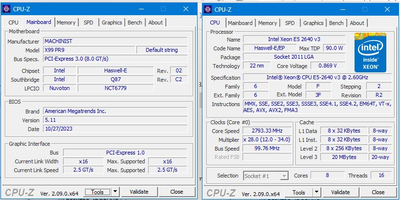Reply 420 of 511, by weedeewee
rasteri wrote on 2024-04-11, 08:17:weedeewee wrote on 2024-04-11, 07:16:Is it this one ? https://www.youtube.com/watch?v=j58Fpm0uetI Machinist X99 PR9
Seems like the board in the video actually has a z97 chipset 😉
Yeah that's it. Maybe the z97 will be easier to get to work than the X99?
No idea if the z97 will be easier to work with, but it might well be that your 'x99' mainboard has a different chipset than the actual x99 and z97 chipsets.
Right to repair is fundamental. You own it, you're allowed to fix it.
How To Ask Questions The Smart Way
Do not ask Why !
https://www.vogonswiki.com/index.php/Serial_port
